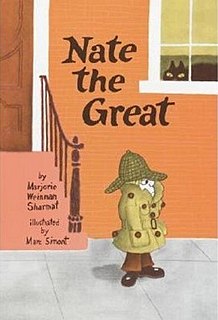 W
W100 Great Detectives (ISBN 978-0-881-84920-2) is a book written by Maxim Jakubowski. Its original title was 100 Great Detectives or the Detective Directory and was published by Carroll & Graf Publishers on 1 January 1991.
 W
WA bondage cover, as opposed to a bondage magazine, was a general-interest magazine that featured bondage imagery on its cover, usually an image of a bound and gagged woman.
 W
WButler Parker is a fictitious British character who was, despite his ostentatious Britishness, created by a German pulp fiction author and became eventually the protagonist of a German TV series.
 W
WA Catalogue of Crime is a critique of crime fiction by Jacques Barzun and Wendell Hertig Taylor, first published in 1971. The book was awarded a Special Edgar Award from the Mystery Writers of America in 1972. A revised and enlarged edition was published in 1989.
 W
WDark Detectives: Adventures of the Supernatural Sleuths is an anthology of fantasy and horror detective stories edited by Stephen Jones. It was published by F & B Mystery in 1999 in an edition of 2,100 copies of which 100 were signed by all the contributors except R. Chetwynd-Hayes. The anthology contains 10 stories and a novel, Seven Stars, whose episodes are interspersed among the stories. Several of the stories first appeared in collections, or in the magazines The Idler, Kadath and Time Out.
Decoder Ring Theatre is a Toronto-based theatre and audio production company that runs a podcast of the same name. It consists primarily of two series, Red Panda Adventures and Black Jack Justice, both of which are done in the style of old-time radio, and are released on alternating weeks.
 W
WThe Detection Club was formed in 1930 by a group of British mystery writers, including Agatha Christie, Dorothy L. Sayers, Ronald Knox, Freeman Wills Crofts, Arthur Morrison, Hugh Walpole, John Rhode, Jessie Rickard, Baroness Emma Orczy, R. Austin Freeman, G. D. H. Cole, Margaret Cole, E. C. Bentley, Henry Wade, and H. C. Bailey. Anthony Berkeley was instrumental in setting up the club, and the first president was G. K. Chesterton. There was a fanciful initiation ritual with an oath probably written by either Chesterton or Sayers, and the club held regular dinner meetings in London.
 W
WDetective Book Magazine was an American pulp science fiction magazine, published by Fiction House in 1930 to 1931 and from 1937 to 1952. Each edition of Detective Book Magazine contained the complete text of a detective novel. Most editions also contained one or more shorter detective fiction stories. Its main competitor was Street & Smith's Detective Story Magazine.
 W
WDetective Story Magazine was an American magazine published by Street & Smith from October 15, 1915 to Summer, 1949. It was one of the first pulp magazines devoted to detective fiction and consisted of short stories and serials. While the publication was the publishing house's first detective-fiction pulp magazine in a format resembling a modern paperback, Street & Smith had only recently ceased publication of the dime-novel series Nick Carter Weekly, which concerned the adventures of a young detective.
 W
WGreat Detective Stories About Doctors is an anthology of science fiction short stories edited by Groff Conklin and Noah D. Fabricant. It was first published in paperback by Collier Books in 1965 and was reprinted on a number of occasions. The two had previously collaborated on another anthology, Great Science Fiction About Doctors.
 W
WJudge Bao stories in literature and performing arts are some of the most popular in traditional Chinese crime fiction. All stories involve the Song dynasty minister Bao Zheng who solves, judges and sentences criminal cases.
 W
WKamen Rider W , is a 2009-2010 Japanese tokusatsu drama, the eleventh series in the Heisei period run of the Kamen Rider Series. It premiered following the finale of Kamen Rider Decade on September 6, 2009, and aired alongside Samurai Sentai Shinkenger in TV Asahi's Super Hero Time programming block. Following Shinkenger's finale, it aired alongside Tensou Sentai Goseiger, until W concluded on August 29, 2010. The series is described as the "Heisei Kamen Rider 10th Anniversary Project: Fall Campaign" . In the first episode of Kamen Rider Fourze, W is revealed to be in the same continuity as the original Showa timeline, making it the first series to do so since Kamen Rider Agito. The series is notable for being the first installment in what's popularly viewed as Heisei era Kamen Rider's second phase by fans.
 W
WNate the Great is a series of more than two dozen children's detective stories written by Marjorie Weinman Sharmat featuring the eponymous boy detective, Nate the Great. Sharmat and illustrator Marc Simont inaugurated the series in 1972 with Nate the Great, a 60-page book published by Coward, McCann & Geoghegan, and Simont illustrated the first twenty books, to 1998. Some numbers were jointly written with Sharmat's sister Rosalind Weinman, husband Mitchell Sharmat or sons Craig Sharmat and Andrew Sharmat, and the last six were illustrated by Martha Weston or Jody Wheeler "in the style of Marc Simont". Several of the books have been adapted as television programs, one of which won the Los Angeles International Children's Film Festival Award. The New York Public Library named Nate the Great Saves the King of Sweden one of its "100 Titles for Reading and Sharing".
 W
WPercy Stuart was a German TV series (1969–1972).
 W
W"Who Shot Phil?" was a storyline of the BBC soap opera EastEnders which began on 1 March 2001 and climaxed on 5 April 2001.
 W
WA whodunit or whodunnit is a complex, plot-driven variety of a detective story in which the puzzle regarding who committed the crime is the main focus. The reader or viewer is provided with the clues from which the identity of the perpetrator may be deduced before the story provides the revelation itself at its climax. The investigation is usually conducted by an eccentric, amateur, or semi-professional detective. This narrative development has been seen as a form of comedy in which order is restored to a threatened social calm.